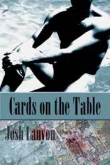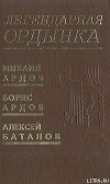
Текст книги "Port Arthur town of Knights of Round Table (СИ)"
Автор книги: Инна Тигги
Жанр:
Биология
сообщить о нарушении
Текущая страница: 1 (всего у книги 4 страниц)
Тигги Инна
Port Arthur town of Knights of Round Table
[in a process of writing and edit work]
17-18.06.2018. Great Britian, UK, England, Nottinghamshire.
Port Arthur town of Knights of Round Table
King Arthur and Knights of Round Table evidences, where to find them, following by old English Legends and tales of historians?
King Arthur named as King of England, British King, British Royalty, making England Kingdom.
Some named King Arthur as a son of Uthel Pendragon and a nephew of King Ambrosius Avrelicius, having his son Mordred from his half-sister Morgana, and having his next woman and a wife Guinevere, daughter of King Lodigra
The dates «from the Jesus birthday year» were with Latin letter J / j / I / i before the year.
So, 5th century-7th century 'es dates looked as I587 (J587, i587, j587, J587),
Latin letter I = 1 number,.
Later all dates had been re-written with the change J / j / I / i on "1" number, making al dates for 1000 years older.
Year J687 (j687, J687, I687, i687) as Year 687 from Jesus Birth started to be written as year 1687.
Plenty paintings & old letters saved old writing years as j567, j687 , which had been re-written later as years 1587, 1687 making works from 6-7 centuries looking like works from 16-17 centuries.
So, to realizing this all issues, we may look for evidences of existence of KIng Arthur from items 5-6-7 centuries in items with dates from 15-16-17 centuries.
We saw Port Artur /Port Arthur town in 18 century. Russians frighted for Port Artur town in 18 century, plenty Russians died here in bloody fight.
Port Arthur /Port Artur /Порт Артур 18 century (for British Royal Prince) On English, Port Arthur = "Lüshunkou District " (Lüshun Port/
Links
«1,300-year-old Latin, Greek and Christian inscriptions found on a windowsill at Tintagel Castle suggest 'the site of King Arthur's conception' had a multicultural community»
Mail Online, 15 июня 2018
http://www.dailymail.co.uk/sciencetech/article-5844569/A-stone-inscribed-rare-ancient-writing-uncovered-Tintagel-Castle.html
Anno Domini AD BC
https://en.wikipedia.org/wiki/Anno_Domini
Lüshunkou District / Lushunkou District / Lyushunkou District in China
Also known as
Lüshun Port / Lushun Port / Lyushun Port
Also known as
Port Arthur / Port Artur / Порт-Артур (on Russian) / Порт Артур (on Russian)
Also known as
Ryojun (from Japan)
See Wikipedia articles
"Surrounded by ocean on three sides, this strategic seaport was originally known to the Chinese as Lüshun (Lushin, Lyushin).
It took its English name,
Port Arthur,
from a Royal Navy Lieutenant named
William C. Arthur
who surveyed the harbor in the gunboat
HMS Algerine
in August 1860,
during the Second Opium War.
At that time Lüshun was an unfortified fishing village." (Wikipedia)
«In the late 1880s, the German company Krupp was contracted by the Chinese government to build a series of fortifications around Port Arthur.»
(Wikipedia)
...
"Port Arthur
first came into international prominence
during the
First Sino-Japanese War (1894-1895).
Following Japan's defeat of Chinese troops at
Pyongyang in Korea
in September 1894,
the Japanese First and Second Armies
converged on the Liaodong Peninsula by land and sea.
Japanese war planners, ambitious for control of the
Liaodong Peninsula and
Port Arthur and also cognizant of that port's
strategic position controlling the northern
Yellow Sea routes and the passage to
Tianjin, were determined to seize it.
Following only token resistance during the day and night of
November 20-21, 1894,
Japanese troops entered the city on the morning of November 21.
Several Western newspaper correspondents
present at the time related the
widespread
massacre of
Chinese inhabitants
of the city Port Arthur
by the victorious Japanese troops,
apparently in response to the murderous treatment the Chinese had shown Japanese prisoners of war at Pyongyang and elsewhere." (Wikipedia)
"the correspondents was
James Creelman of the
New York World.
Though at least one American correspondent
present completely contradicted Creelman's account,
there is "little doubt" that the
Japanese troops "indiscriminately killed"
thousands of
Chinese soldiers and civilians,
and the story of a
Japanese massacre
soon spread among the Western public, damaging Japan's public image and the movement in the United States to renegotiate the unequal treaties between that country and Japan.
The event came to be known as
the Port Arthur massacre." (Wikipedia)
["the garrison numbered approximately 20,000 soldiers, but from his estimation, it should have had between 30,000 and 40,000 men stationed there. as military plus civilians] [?]
and more, including Russian owed Port Arthur town in Chine for some time, a battle for Port Arthur town, see in
https://en.wikipedia.org/wiki/Lüshunkou_District
From Wikipedia
"Japan went on to occupy
Port Arthur
and to seize control of the whole
Liaodong Peninsula as spoils of war. As part of the terms of the
1895 Treaty of Shimonoseki
concluding the war,
Japan was granted the
Liaodong Peninsula but had to cede back the territory when threatened jointly with
war by
France, Germany and Russia in what is called
the Triple Intervention of 1895.
This was seen as a great humiliation in Japan.
Two years later,
Russia
coerced a lease of the Liaodong from China
and gained
railroad right-of-way to join the
Liaodong Peninsula to the Chinese Eastern Railway with a line running
from
Port Arthur and nearby Dalny (Dalian)
to the Chinese city of
Harbin (see Kwantung Leased Territory),
and systematically began to fortify the town and harbor at
Port Arthur.
[Railway
Port Arthur + Dalny (Dalian)
to
Harbin
as Russian building railway was]
This railway
from
Port Arthur to Harbin
became
a southern branch of the
Chinese Eastern Railway
(^not to be confused with the
South Manchurian Railway,
the name of a company that undertook its management during the later Japanese period after 1905).
Tsar Nicholas II
believed this acquisition of a Pacific port would
enhance Russian security,
and extend its economic influence.
Tsar Nicholas II
was also falsely informed that the
British were considering seizing the port.
All this was an additional goad to an already seething Japan. It was a hard lesson in international geopolitics Japan would not soon forget.
The Russian town of
Dalny (Dalien/Dalian) was undeveloped in this era
prior to 1898
when the
Russian Tsar Nicholas II
founded the town of Dalny (sometimes Dalney).
In 1902,
the Russian viceroy
de-emphasized
Dalny
(building
a palace
and cultural edifices
instead at Port Arthur),
except as a commercial port while continuing the development of manufacturing.
Russo-Japanese War (1904-1905)
Ten years later
Port Arthur
again played a central role in war in the Far East.
It is fair to say that at its heart,
the Russo-Japanese War (1904-1905)
was an extended battle for the possession of
Port Arthur
and the railway to it, the Southern Manchurian Railway.
After the Boxer Rebellion (1900-01)
had been extinguished by
an international coalition of troops,
Russia
refused to withdraw its reinforcements from Manchuria and instead began to fortify and garrison the entire route along the Southern Manchurian Railway.
With this development,
Japan
proposed the two powers meet and discuss their respective roles in eastern Manchuria,
as the area was considered a portion of their respective spheres of influence.
Talks were conducted between 1902 and 1904.
While numerous proposals and agreement papers were generated between the two powers,
Russia
continued the
de facto
annexation of territory through fortification and garrison,
if not
de jure
while employing stalling tactics in its negotiations.
In the end, with over two years of intensive bilateral negotiations having gotten nowhere in clarifying each country's rights, prerogatives, and interests in inner Manchuria,
Japan
declared war on Russia
in February 1904." (from Wikipedia)
The Battle of Port Arthur
"The Battle of Port Arthur,
the opening battle of the Russo-Japanese War,
was fought in the heavily fortified harbor of the town of
Port Arthur/Lüshun [Lyushun, Lushun. Loushun]
on 9 February 1904
when the
Japanese attacked at night with torpedoes,
followed by a brief daylight skirmish by major surface combatants.
By the end of July 1904,
the Japanese army had pushed down the
Liaodong peninsula
and was at the outer defenses of
Port Arthur.
The fact that Japanese forces
had closed to within artillery range of the harbor
in early August 1904
led directly to the
naval Battle of the Yellow Sea
which solidified Japan's command of the sea,
where her fleets continued to blockade the harbor.
Virtually all the battles of
the war
until July 1904
were strategic battles for territorial gain or position leading to the investment and siege of the port city.
The port
Port Arthur
eventually fell 2 January 1905
after a long train of battles on land and sea during which the Japanese occupied the whole of the Korean Peninsula, split the Russian Army, devastated the Russian Fleet, and cut off the source of supplies on the railway from Harbin, culminating
in the bloody battle
known as
the Siege of Port Arthur
the Siege of
Port Arthur
(June 1904 – January 1905;
some sources place the siege start in late July, a technical difference due to definitions)."
(from Wikipedia)
https://en.wikipedia.org/wiki/Lüshunkou_District
After World War II
"The Japanese-controlled
Ryojun City had 40 districts.
The Chinese
Lüshun City
was established
on November 25, 1945
to replace Ryojun.
The city was a subdivision of a larger
Lüda City and contained 40 villages in 3 districts.
...
On January 7, 1960,
Lüshun City
was renamed
Lüshunkou District,
still under
Lüda. (Lüda, Lyuda, Luda,[Louda])
(from Wikipedia)
*************************
Lyuda
is a popular
Russian female name for
Ludmila,
Людмила,
with shortages this as short names
Люда, Мила, Милочка
Lyuda (Люда) ,
Louda, Luda, [Lüda],
Mila (Мила).
******
mill [Мил] мельница (on Russian)
***
a Mill – Mila (Russian female short name). [milii, miliy, milij, milaya] (darling, pleasant, nice, dear words on Russian as милый, милая),
Russian word "милёнок" [milioniok, mil'onjok] = a darling, a lover,
with English word sounds "a mill", "mill". (as some traces of connections of communications between English males and Russian females and Russian males in the past, probably?
The Knight with a word, making move by this, looking as a mill, moving wings, making such man to look like a mill, to name him (if to be in a love) as «a mill» The Mill" «Mill» «Milii» (Mill-lien – Miliij, Miliiy, Milij, Miliy)
There we some hidden romantic love stories communications between Russians-English males and females, saving English word «Mill» for a love word for the traditional love language for all Russians.
Plenty British and American men and women never knew this as they never leaned Russian language to recognize some hidden English words in Russian language as traces of communications between English and Russians in the past.
But soon to lean, and you will surpized to find a love word милый, милая milii, milaya with English «mill» (a mill), and your imagination will opened suddenly to see a Knight, moving his Sword around him to protect himself in a battle against all enemies as a mill, The Mill.
We see a modern Great Britain and England to find this «Mill» and we see «King's Mill Hospital» in Mansfield and Sutton-in-Ashfield, Nottinghamshire, England.
The Knight of Mill, Miller, the owner of a mill here had been granted to be a Noble by King for a providing a safe shelter accommodation to The King, as a real historian records and a story of owners of a mill, where now a new building of King's Mill Hospital in Nottinghamshire.
This place had been used and American military, as a hospital, and as a prison for Italian prisoners of WWII, with a free unlocked rules to leave to mix with locals in the daily time.
The Mill with moving wing as a type of some Helicopter or UFO (flying object).
In Russian modern language,
Russians
used the nickname
"The Round Plate" ?
"Round Plate"
for UFO (flying objects with a round shapes).
«Round Plate», «Round Table», «Ball», «The Ball», «Shar», «Sharoy»
(Ball/Shar + Royalty) = Sharoy
Russian The [[ze] [se] ]
The Royalty as [ze royalti] [se royalti] to change to [seroy]
Sir [Ser]
[serii] [seriiy] = gray, grey
My fantasy had been opened to imagine some huge round flying object as UFO as a a round plate or a round table or some ball with Knights of Round Table (UFO) as pilots or a military people.
UFO may fly, moving traces of some communication here and there and far away.
In this way of thinking,
this would be some secret hidden story of this from a past, saving
legends of King Arthur and Knights of Round Table
on English land
and
English word
"Mill" [мил] (The Mill, a mill (мельница) )
in Russian love language in Russian words with [мил]:
"милый",
"милая",
"милёнок",
"миловаться",
"мил", "мила",
and as an juridical term words on Russian:
"помилована",
"помилован",
"помиловать"
(= to forgive to let to go free), juridical term.
a mix or rule of a power of a king to judge to kill or let to go free and a power of a love and attraction in a physical look and/or in character to be beloved too.
**************
The Famous Genius,
Russian Poet
Aleksandr Sergeevich Pushkin, a Russian Noble,
had wrote his famous
Russian Tale story as a poem
"Ruslan and Ludmila"
("Руслан и Людмила")
(19 century poem tale)
Russian Noble Aleksandr Pushin had his free access to some secret archive Department as The Official of Secret Department on Russian Royalty Archives.
So, A. Pushin had read some plenty secret hidden archive papers and documents, hidden to know for open public.
Plenty investigators used to search his lines to find the hidden information as patterns.
Some saw links, for example, of his line about a special Well-Educated Tommy Cat, working near The Oak Tree around, not able to leave this place to a real geographic place Plato Deccan in India, places of Indian tribe kotti, kot (kot=cat, tommy cat = kot кот on Russian).
So, some things may be and for his poem tale «Ruslan and Ludmila» (a short name of Russian female name Ludmila would be Luda, Lyuda, Mila.
Lyuda as a town named Port Artur (Port Artur) (Порт Артур)ю
Mila female short name for Lyudmila and Lyuda (Lyuda, Luda, Louda) a short name for Ludmila.
Mila, and English work a mill, mill – мельница.
In Russian tale in poem by Aleksandr Pushkin,
The Beauty Ludmila slept as had been cached by evil creature of some another human race, the powerful man Kaschey (Cassey, Kaschey), whom had not a death and whom had flied and whom killed each easy.
The Powerful man as another powerful race Cassey or Kaschey had hidden his death inside his needle, his spine and this needle, the spine had been hidden inside some egg, this egg had been hidden inside some duck, this duck had been hidden inside some ... etc, etc, making a hard to find the resource of this death to kill Cassy or Kaschey.
And just the break of this needle or the spine inside some egg could stopped a life of Cassey (Kaschey) as this edn and his final death.
a needle, a spine as some radio-antenna , aerial transmitter link, making the recovery and safety and recreations?
*********************
Continue already from Wikipedia:
"In 1981,
Lüda was renamed Dalian, with Lüshunkou remaining a constituent district. In 1985, 7 of Lüshunkou's 9 townships were upgraded to towns.
https://en.wikipedia.org/wiki/Lüshunkou_District
***
So, the old town Port Arthur,
Port Arthur (Port Artur) also had been known as
"Lüda" (Luda, Lyuda, Louda), Dalian
Dalian
looked sounding as
Da Lion/ De Lion / The Lion/ Де Лев
Lion = Лев (on Russian)
The famous British Organization Lions.
But we read on Russian from Wikipdia
that this place where was Port Arthur after, named as Shiczikou , Шицзыкоу (букв. "Пасть льва"), The
"В годы существования монгольской империи Юань (1271-1368) город носил название
Шицзыкоу (букв. "Пасть льва"),
предположительно, по статуе, ныне находящейся в парке, примыкающей к военному порту.
"
================================================================
Links
================================================================
1. On Russian, news
17 июня 2018
"Ученые удивились многонациональности рыцарей Круглого стола"
https://lenta.ru/news/2018/06/17/rizarikruglogo/
"Ученые из Великобритании выяснили, что состав рыцарей Круглого стола мог быть более многонациональным, чем считалось ранее. Об этом пишет Daily Mail.
К такому выводу историки пришли, изучив камень с высеченными на нем надписями и другие артефакты в замке Тингатель в Корнуолле, который связывают с легендой о короле Артуре.
На камне, который идентифицировали как подоконник замка, были обнаружены надписи возрастом 1300 лет, написанные на латыни и греческом языке, а также христианские символы. Там же были обнаружены турецкие чаши и стеклянные бокалы из Испании, которые относятся к тому же историческому периоду. Все это дает ученым основания полагать, что британцы того времени имели контакты со Средиземноморьем.
Легендарный король племени бриттов Артур, согласно преданию, жил в V-VI веках нашей эры. Самой известной является легенда о том, как король собрал в своем замке Камелоте рыцарей Круглого стола, число которых у разных авторов варьируется от 12 до более чем тысячи человек.
Замок Тинтагель в Корнуолле находится на юго-западе Англии и считается местом рождения короля Артура. Там был обнаружен так называемый «камень Артура», который считают единственным реальным подтверждением существования легендарного героя. Артефакт относится к VI веку."
and link to Daily Mail article :
Mail Online, 15 июня 2018
2. On English
Mail Online, 15 June 2018
«1,300-year-old Latin, Greek and Christian inscriptions found on a windowsill at Tintagel Castle suggest 'the site of King Arthur's conception' had a multicultural community»
http://www.dailymail.co.uk/sciencetech/article-5844569/A-stone-inscribed-rare-ancient-writing-uncovered-Tintagel-Castle.html
3.1
Anno Domini AD BC
https://en.wikipedia.org/wiki/Anno_Domini
4.1a on Russian
Порт-Артур
https://ru.wikipedia.org/wiki/Порт-Артур
Из Википедии (from Wikipedia):
«Порт-Артур – бывший портовый город (незамерзающий порт, военно-морская база) в Китае на Жёлтом море, был расположен на юго-восточной оконечности Ляодунского полуострова – Квантунском полуострове (Квантунская область), под 38╟ 48» северной широты и 121╟ 20" восточной долготы.
В настоящее время на месте бывшего города расположен район Люйшунькоу города Далянь Китайской Народной Республики."
"Поселение на месте
Люйшунькоу, существовавшее со времен династии Цзинь (266-420) носило название
Машицзинь.
В период Тан (618-907) его переименовали в
Дуличжэнь.
В годы существования монгольской империи Юань (1271-1368) город носил название
Шицзыкоу (букв. "Пасть льва"),
предположительно, по статуе, ныне находящейся в парке, примыкающей к военному порту.
В эпоху империи Мин (明朝, 1368-1644) поселение подчинялось управлению береговой обороны (кит. упр. 海防哨所) Цзиньчжоуского вэя (кит. упр. 金州卫), а на территории современного города размещались левый и центральный со этого вэя (кит. упр. 金州中左所). Тогда же появилось название «Люйшунь» – в 1371 г. будущий император Китая Чжу Ди, возглавлявший оборону северо-восточных границ, направил в эти места 2 посланников для ознакомления с местностью. Поскольку путь их был спокоен и удобен (люйту шуньли – кит. упр. 旅途顺利), то по приказу Чжу Ди эта местность была названа Люйшунькоу (букв. «бухта спокойного путешествия»)
Английское название Port Arthur это место получило в связи с тем, что в августе 1860 года в этой гавани чинился корабль английского лейтенанта Уильяма К. Артура (англ.)[1]. Существует также версия, что китайское местечко Люйшунь было переименовано англичанами в честь члена британской королевской семьи Артура Коннаутского[2] во времена Второй Опиумной войны. Это английское название позже было принято в России и в других европейских странах.
Строительство военно-морской базы в стратегически важном заливе Люйшунь было начато китайским правительством по настоянию Бэйян дачэнь Ли Хунчжана, в 1880-е годы. Уже в 1884 г. для охраны побережья от возможных высадок французского десанта в городе был размещен отряд китайских войск, а командир стоявшего в бухте китайского военного корабля «Вэйюань» Фан Боцянь выстроил одну из первых земляных береговых батарей крепости силами своего экипажа. Батарея получила название «Вэйюань паотай» (букв. «форт Вэйюань»).
В промежутке между 1884 и 1889 годами Люйшунь стал одной из баз Бэйянского флота империи Цин. Работами руководил немецкий майор Константин фон Ганнекен. В Люйшуне размещались основные ремонтные мощности Бэйянского флота – 400-футовый (120 м) док для ремонта броненосцев и крейсеров, и малый док для ремонта миноносцев. Дноуглубительные работы, проведенные в бухте, позволили довести глубину внутреннего рейда и входа в бухту до 20 футов (6.1 м).
21 ноября 1894 года в ходе первой японско-китайской войны Люйшунь пал, вследствие полного развала системы обороны и дезертирства командующего обороной генерала Цзян Гуйти, а также запрета Бэйянскому флоту со стороны правительства и лично Ли Хунчжана дать решающий бой японскому флоту на внешнем рейде Люйшуня. Остатки гарнизона под командованием генерала Сюй Бандао прорвались и соединились с основными силами главнокомандующего китайскими войсками в Маньчжурии генерала Сун Цина. Люйшунь заняла Япония, захватившая в крепости огромные трофеи. Японские войска устроили в Люйшуне беспощадную 4-дневную резню под предлогом того, что в городе были обнаружены останки пленных японских солдат, захваченных войсками Сюй Бандао во время вылазки. По китайским оценкам, погибло около 20 тысяч мирных жителей, независимо от пола и возраста. Из всего населения города, по словам Фредерика Вильерса, оставили только 36 человек, которые должны были захоронить трупы погибших. На их шапках по приказу японского командования было написано: «Этих не убивать». Сбор тел продолжался в течение месяца, после чего по приказу японцев огромную гору тел облили маслом и подожгли, поддерживая огонь в течение 10 дней. Пепел и обгоревшие кости были захоронены у подножия горы Байюйшань в 4 больших гробах с восточной стороны горы. В настоящее время это место известно под названием «Могила 10000 сохранивших верность». В 1895 году по Симоносекскому договору Порт Артур перешел к Японии, но из-за сильного давления со стороны России, Германии и Франции (Тройственная интервенция) Япония вскоре была вынуждена вернуть залив Китаю.
4.1b on Russian
Оборона Порт-Артура
https://ru.wikipedia.org/wiki/Оборона_Порт-Артура
Даты: с 17 июля 1904 (30 июля 1904) по 23 декабря 1904 (5 января 1905)
Место: Ляодунский полуостров, Порт-Артур
Итог: Победа японской армии
4.2a On English
"Lüda"
"Lüshunkou District" (also known as Port Arthur, Port Artur, Порт-Артур)
https://en.wikipedia.org/wiki/Lüshunkou_District
Lüshunkou District / Lushunkou District / Lyushunkou District in China
also known as
Lüshun Port / Lushun Port / Lyushun Port
also known as
Port Arthur / Port Artur / Порт-Артур (on Russian) / Порт Артур (on Russian)
also known as
Ryojun (from Japan)
also known as
"Lüda" (Luda, Lyuda, Louda), Dalian
https://en.wikipedia.org/wiki/Lüshunkou_District
4.2b on English
"Siege of Port Arthur"
Date August 1, 1904 – January 2, 1905
(5 months and 1 day)
Location Modern Lüshunkou District, China
Result Japanese victory
from Wikipedia
"The Siege of Port Arthur
(Japanese: Ryojun Kōisen;
Russian: Оборона Порт-Артура, Oborona Port-Artura),
(August 1, 1904 – January 2, 1905),
the deep-water port and Russian naval base at the tip of the Liaodong Peninsula in Manchuria, was the longest and most violent land battle of the Russo-Japanese War.
Port Arthur was widely regarded as one of the most strongly fortified positions in the world at the time.
However, during the First Sino-Japanese War,
General Nogi Maresuke
had taken the city from the forces of Qing China in only a few days.
The ease of his victory during that previous conflict, and overconfidence by the Japanese General Staff in Japan's ability to overcome improved fortifications made by the Russians, led to a much longer campaign, with much heavier losses than expected.
The Siege of Port Arthur
saw the introduction of much technology
used in subsequent wars of the 20th century (particularly in World War I)
including
massive 28 cm howitzers capable of hurling 217-kilogram (478-pound) shells over 8 kilometers (5.0 miles),
as well as
rapid-firing light howitzers,
Maxim machine guns,
bolt-action magazine rifles,
barbed wire entanglements,
electric fences,
arc lamp searchlights,
tactical radio signalling
(and, in response, the first military use of radio jamming),
hand grenades,
extensive trench warfare,
and the use of modified naval mines as land weapons." (from Wikipedia)
"The Russian forces
manning the defenses of Port Arthur
under
Major-General Baron Anatoly Stoessel
consisted of almost 50,000 men and 506 guns
(including the crews of the Russian warships in port).
He also had the option of removing the guns from the fleet to bolster the land defenses.
The total population of
Port Arthur
at the time [August 1, 1904 ]
was
around 87,000,
which meant that a very high proportion of the population
were combatants." (from Wikipedia)
"The outer defense perimeter of Port Arthur
consisted of
a line of hills, including
Hsiaokushan and Takushan near the Ta-ho River in the east, and
Namakoyama, Akasakayama,
174-Meter Hill, 203-Meter Hill and
False Hill in the west.
All of these hills were heavily fortified.
Approximately 1.5 kilometers (0.93 miles) behind this defensive line was the original stone Chinese wall, which encircled the Old Town of Lushun from the south to the Lun-ho River at the northwest.
The Russians
had continued the line of the Chinese wall
to the west and south, enclosing the approaches to the harbor and
the New Town of Port Arthur
with concrete forts, machine gun emplacements, and connecting trenches.
General
Stoessel
withdrew to Port Arthur
on July 30, 1904.
Facing the Russians was
the Japanese Third Army,
about 150,000 strong, backed by 474 artillery guns, under the command of
General Baron
Nogi Maresuke." (from Wikipedia)
The battles
"Battle of the Orphan Hills
(600-foot (180 m) high Takushan (Big Orphan Hill)
and
the smaller Hsuaokushan (Little Orphan Hill,
Ta River).
Gaining these two hills cost the Japanese 1,280 killed and wounded.
The loss of the two hills."
"Battle of 174 Meter Hill
(the Wolf Hills, 174 Meter Hill)
The Russian defensive positions on 174 Meter Hill itself were held by the 5th and 13th East Siberian Regiments, reinforced by sailors, under the command of Colonel Tretyakov, a veteran of the Battle of Nanshan.
With more than half of his men killed or wounded and with his command disintegrating as small groups of men fell back in confusion, Tretyakov had no choice but to withdraw, and 174 Meter Hill was thus overrun by the Japanese. The assault on 174 Meter Hill alone had cost the Japanese some 1,800 killed and wounded and the Russians over 1,000.
The assaults on the other sections of the Russian line had also cost the Japanese heavily, but with no results and no ground gained.
When Nogi finally called off his attempt to penetrate the Wantai Ravine on August 24, 1904, he had only 174 Meter Hill and the West and East Pan-lung to show for
his loss of more than 16,000 men.
With all other positions remaining firmly under Russian control, Nogi at last decided to abandon frontal assaults in favor of a protracted siege.
On August 25, 1904, the day after Nogi"s last assault had failed, Marshal Oyama Iwao engaged the Russians under General Aleksey Kuropatkin at the Battle of Liaoyang."
The siege
"Nogi had also been reinforced by additional artillery and 16,000 more troops from Japan, which partially compensated for the casualties sustained in his first assaults.
While the Japanese set to work in the sapping campaign,
General Stoessel continued to spend most of his time writing complaining letters to the Tsar about lack of cooperation from his fellow officers in the navy.
The garrison in Port Arthur was starting to experience serious outbreaks of scurvy and dysentery due to the lack of fresh food.
Nogi nor Stoessel seem to have realized the strategic importance of
203 Meter Hill:
the hill was the key to the whole Russian defense.
Mid-September 1905,
General Nogi abandoned the attempt,
he had lost over 3500 men.
Nogi attempted yet another mass «human wave» assault on 203 Meter Hill
on October 29, 1904, which, leaving Nogi with the
deaths of an additional 124 officers and 3611 soldiers.
Nogi received additional reinforcements from Japan."
(from Wikipedia)
Battle of 203 Meter Hill
"The highest elevation within Port Arthur, designated «203 Meter Hill», overlooked the harbor. The «203-Meter Hill» consists of two peaks (203 meters and 210 meters high, and 140 meters apart) connected by a sharp ridge. " « It was also connected to the neighboring strongholds on False Hill and Akasakayama by trenches.»
«The Russian defenders were commanded by Colonel Tretyakov».
«Japanese General Kodama visited General Nogi», having the Japonese loss of September 22 for over 2500 casualties, a Japonise loss of October for 124 officers and 3611 men.
«Japanese casualties in November 1905 year were officially 4,000 men, but unofficially perhaps twice as high.»
Russian General
Roman Kondratenko
took the precaution of stationing snipers to shoot any of his front line troops attempting to abandon their positions.
1905 year,
"At 08:30 on November 28, with massive artillery support, Japanese troops again attempted an assault up the sides of both Akasakayama and 203 Meter Hill.
Over a thousand 500 lb (230 kg) shells from the 11-inch (280 mm) howitzers were fired in a single day to support this attack.
The Japanese reached as far as the Russian line of barbed wire entanglements by daybreak and held their ground throughout the following day, November 29, while their artillery kept the defenders busy by a continuous bombardment.








